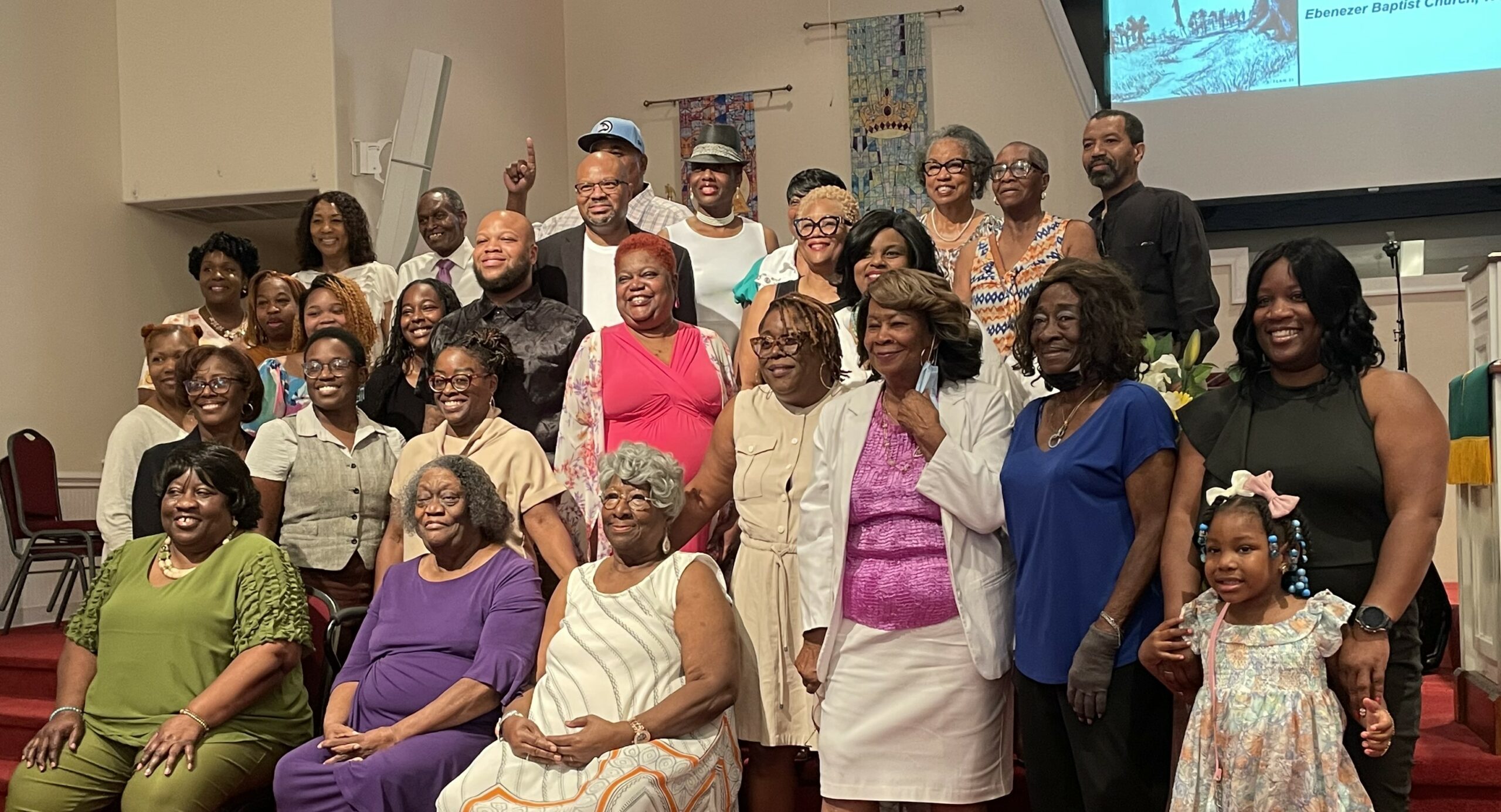
Members of two Athens churches distributed checks to descendants of Black families whose homes were taken by the City of Athens and the University of Georgia in the 1960s—a first of its kind attempt at reparations, according to organizers.
Predominantly white Oconee Street United Methodist Church and predominantly Black Ebenezer Baptist Church West formed a group called Athens Reparations Action and worked together to raise $120,000 for the families of 10 former Linnentown homeowners. They distributed checks to family representatives during a June 23 ceremony at Ebenezer.
“We know no amount of money can repair the harm that was suffered, so what we are offering today is a token of honor and respect,” said Alys Willman, co-chair of Athens Reparations Action with Chaplain Cole Knapper.
Organizers said that, to their knowledge, it was the first attempt to privately raise funds for reparations for past harm done to Black Americans. “It isn’t being done anywhere in the country the way we are doing it here in Athens, Georgia, and we are very proud of that,” Knapper said.
“People of faith do not have to wait for government to act to create local solutions,” Knapper continued. “We don’t have to wait on the University of Georgia. We don’t have to wait on the Board of Regents. We don’t have to wait on our elected representatives in the Georgia legislature. We don’t have to wait.”
When the city government used eminent domain to seize property in Linnentown on behalf of UGA to build dormitories on Baxter Street, Black homeowners were paid far less than white homeowners. Many Black residents were forced into public housing or bought new homes in parts of town that did not experience such explosive growth in value. UGA geography professor Jerry Shannon calculated that Black Linnentown homeowners lost a total of $5 million of intergenerational wealth due to their removal.
While the Georgia constitution prohibits direct cash payments from the government to individuals, the Athens-Clarke County Mayor and Commission unanimously passed a resolution in 2021 apologizing for its role in destroying the neighborhood, committed $2.5 million to reparations in some other form and appointed a Justice and Memory Committee to recommend how to spend that money. Half will go toward down payment and home repair assistance, and the other half will fund a Black history center housed in the new Classic Center arena.
“History will tell that Athens, Georgia, and the entire world began to change three years ago,” Knapper said.
UGA has thus far refused to contribute the other $2.5 million and has not accepted responsibility for the destruction of Linnentown. The University System of Georgia even tried to block renaming a portion of Finley Street near campus Linnentown Lane. The university drew rebukes from several speakers at the Ebenezer event.
“The past actions of the University System of Georgia were a true example of racist and discriminatory actions—a pure example of one group’s willingness to use their power over another group,” said former Clarke County School District superintendent Xernona Thomas, whose grandparents lived in Linnentown.
But “what the devil meant for harm, God turned to good,” Thomas said, describing how her family moved up from “a wooden home with outdoor plumbing” to “a brick home with modern appliances.” Thomas, a three-time UGA graduate, said the improvement in her family’s circumstances allowed her to “matriculate from a place of hate.”
Another Linnentown descendant, Geneva Johnson, said she plans to press UGA President Jere Morehead further. “I’ve got a meeting with him,” she said. “We ain’t through yet.”
Marie Johnson, 89, struggled to her feet to deliver her remarks. “I chose to stand, the way my father stood,” she said. Johnson said she was planning to remodel her parents’ home for them before it was razed. “I thought, ‘Who could be so cruel to take it away from them?’”
The movement to recognize Linnentown began in 2018, when Joseph Carter, then a PhD candidate at UGA, found records related to the neighborhood’s demolition and got in touch with former residents, including Hattie Thomas Whitehead, who later wrote a book and a musical about the neighborhood. While the story was already known among native Black Athenians, Carter and Thomas Whitehead brought it to the attention of a broader audience through local media and subsequent coverage by national news outlets.
“It was hid,” said Bobby Crook, who was 11 when Linnentown was razed. “They didn’t want anybody to know… But the truth comes to light. You have to believe that.”
Like what you just read? Support Flagpole by making a donation today. Every dollar you give helps fund our ongoing mission to provide Athens with quality, independent journalism.


